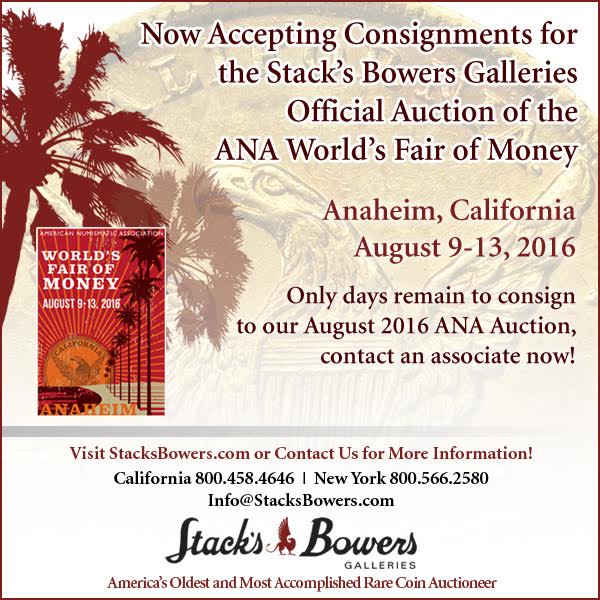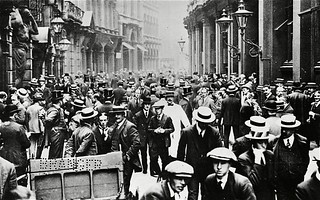
PREV ARTICLE
NEXT ARTICLE
FULL ISSUE
PREV FULL ISSUE
PANIC SCRIP OF 1914
Pablo Hoffman forwarded this item from the Delancey Place blog, an excerpt from the new book The End of Alchemy by Mervyn
King. Email subscriptions are free and bring some very interesting book excerpts to your inbox daily. it's become one of my favorite
blogs. -Editor
"The outbreak of the First World War saw the biggest financial crisis in Europe, at least until the events of 2008, and an equally severe crisis in New York, albeit that the Great Depression was a bigger economic crisis in terms of its impact on output and unemployment. ... Yet I found that few people knew much about the financial crisis of 1914. Even the war memoirs of the Chancellor of the Exchequer at the time, David Lloyd George, devote only fourteen out of 2108 pages to the financial crisis he faced. "So what happened in 1914? ... Just two days before Britain declared war in August 1914, the Governor of the Bank of England, Lord Cunliffe, was lunching on the yacht of the wealthy and well-connected Clark family, moored off the west coast of Scotland. ... 'There's talk of a war,' said Lord Cunliffe, 'but it won't happen. The Germans haven't got the credits.' ... [famed economist] John Maynard Keynes too was not immune to the mood of the moment when, on 24 June 1914, he wrote to the Treasury: 'In a modern panic it is improbable that the big banks will come to grief.' ... It was the ultimatum from Austria to Serbia (demanding that Serbia take draconian steps to suppress the expression of nationalist opinions) on 23 July that finally changed sentiment. "The next two weeks saw panic in markets and among banks. European stock markets fell sharply, and several were closed. ... At 10.15 a.m. on Friday 31 July the London Stock Exchange was closed in order to postpone settlement of transactions and thereby prevent a wave of failures among its members as prices plummeted. "That same day, lines formed in Threadneedle Street outside the Bank of England as depositors queued, as was their right, to convert deposits or notes into gold sovereigns, which commercial banks would not provide to them. ... "Meanwhile, on the other side of the Atlantic, the position was no less precarious. ... The dollar fell sharply. What happened over the next few weeks, however, was to result in New York displacing London as the money centre of the world. ... "Out of the 1907 crisis came [a] solution to the problems of 1914. ... Emergency banknotes, embossed with each bank's own name and logo, worth $500 million were printed in advance and stored with the Treasury in a new underground vault. Here was a source of emergency money that could be distributed to banks in exchange for collateral without the need for a central bank. ... "In contrast with 1907, when the money supply fell by over 10 per cent, in 1914 the creation of emergency money allowed the money supply to rise at an annual rate of around 10 per cent. Demand for emergency money peaked at the end of October 1914 and fell gradually, disappearing altogether by the middle of 1915. Despite the absence of any help from the new Federal Reserve Board, not yet up and running, [U.S. Treasury Secretary] McAdoo had shown how a government could act as a lender of last resort. ... "Britain declared war on Tuesday 4 August. ... [But] Britain had not learned from the US experience in 1907 and had printed no store of emergency money to distribute in a crisis. "Over five months, Chancellor of the Exchequer [David] Lloyd George and Treasury officials recapitalised the City. ... The Bank [of England] bought one-third of the entire stock of bills, amounting to some 5.3 per cent of GDP. As Lloyd George admitted in his memoirs, by offering the guarantee the government had 'temporarily assumed immense liabilities'. He took the risk of losses on the assets he guaranteed without seeking any compensation. It was a gamble that could have been taken only in wartime. "It worked. The City was saved.
I came THIS close to buying a copy of Mervyn King's book to read on our trip this week (my wife prefers to do the driving). I guess I
didn't have to - this may have been the most interesting part, at least for the numismatist in me. So the U.S. printed half a billion
dollars worth of emergency money in 1914? Is that true? What became of it? Was it all destroyed? Were no specimens kept for posterity?
I'd be interested in learning more about this if anyone has any information. -Editor
To read the complete article, see:

Wayne Homren, Editor The Numismatic Bibliomania Society is a non-profit organization promoting numismatic literature. See our web site at coinbooks.org. To submit items for publication in The E-Sylum, write to the Editor at this address: whomren@gmail.com To subscribe go to: https://my.binhost.com/lists/listinfo/esylum All Rights Reserved. NBS Home Page Contact the NBS webmaster 
|
